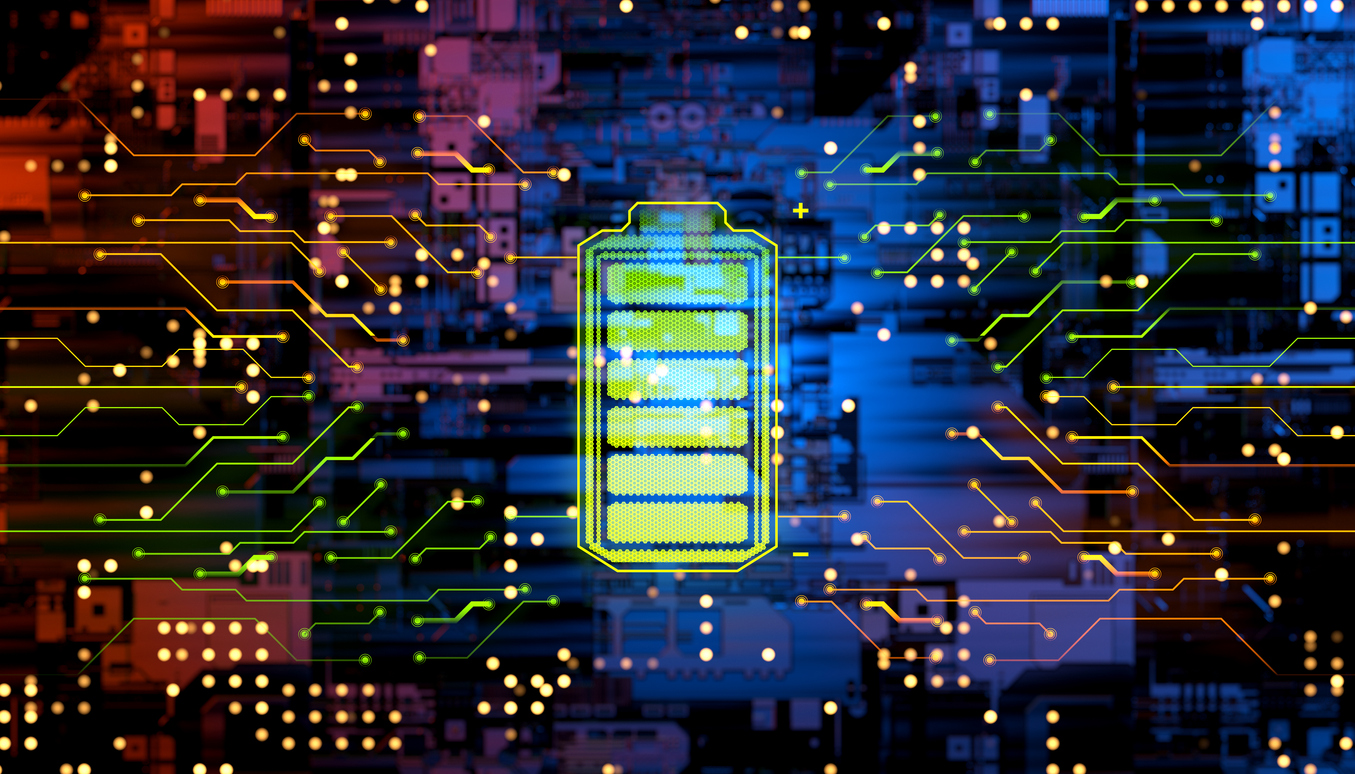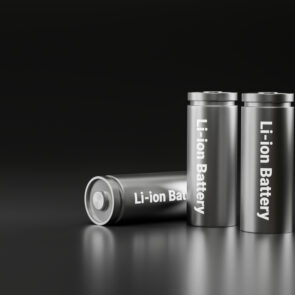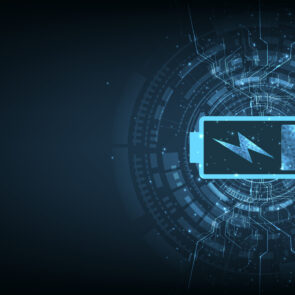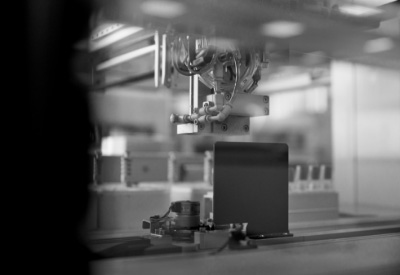In today’s world, the need for efficient, reliable, and long-lasting power sources is never-ending—and ever-increasing as technology becomes more complex. Whether you’re a space agency launching satellites, a defense organization securing critical communication systems, a medical professional implanting life-saving devices, or just someone wanting a reliable mobile phone for everyday life, the importance of batteries cannot be overstated.
This blog explores the diverse world of batteries, their various types, different sizes, and the types of battery technology that exist for powering a vast range of energy needs.
Types of Batteries and Their Uses
Power sources come in various shapes and sizes, and all battery types have their own set of characteristics that make them especially beneficial for certain applications and ill-suited for others. The following explores some of the most common types of batteries employed in the modern world, each with varying features and uses.
Alkaline Batteries
Alkaline batteries are a staple in the battery world and can be found in numerous everyday devices, including toys, remote controls, flashlights, and more. They are primarily known for their affordability, accessibility, and reliability.
Alkaline batteries are a natural choice for non-rechargeable applications that do not require large amounts of power but have a limited lifespan. While there are methods to recharge alkaline batteries, this poses some safety risks, so most batteries are used only once. The commonality of these power sources combined with their single-use nature raises significant disposal issues, as improperly discarded alkaline batteries can have adverse environmental effects.
Nickel Metal Hydride Batteries
Nickel metal hydride (NiMH) batteries are an eco-friendly alternative to traditional alkaline batteries, though they are far less common and generally come with a higher up-front price tag. However, NiMH batteries are rechargeable, potentially making them more cost-effective and sustainable in the long run.
These batteries boast impressive versatility and are commonly used in portable electronics like digital cameras. While they offer a longer lifespan and higher capacity than alkaline batteries, they still fall short in certain demanding applications due to their relatively high self-discharge rate, narrow operational temperature range, and tendency to degrade after repeated recharge cycles.
Lithium-Ion Batteries
Lithium-ion batteries can be found in nearly all common high-tech electronic devices we use in our daily lives, from laptops and smartphones to electric vehicles. These batteries are known for their high energy density, lightweight design, and excellent rechargeability.
These benefits make lithium-ion batteries a crucial element in the transition to greener transportation and renewable energy, greatly surpassing the capabilities of alkaline batteries for most scenarios. However, they do have drawbacks, including safety and disposal concerns, cost, and limited temperature tolerance.
Lithium Polymer Batteries
Lithium polymer (LiPo) batteries are a subset of lithium-ion batteries and are especially well-known for their flexibility in both shape and size. They are often employed in drones and other remote-controlled vehicles.
LiPo batteries boast comparatively high discharge rates and a lightweight design but require careful handling due to their sensitivity to overcharging and punctures, both of which could lead to catastrophic failures.
Lead-Acid Batteries
Lead-acid batteries have been employed for over a century, seeing widespread use in automotive applications, uninterruptible power supplies (UPS), and renewable energy storage. They are known for their durability and ability to provide a high current throughout the battery’s lifespan.
Despite this benefit, lead-acid batteries are extremely heavy, and although they have relatively short lifespans, they still tend to require regular maintenance. Combined, these drawbacks greatly limit their application potential.
Zinc-Carbon Batteries
Similar to alkaline batteries, zinc-carbon batteries are another type of disposable battery commonly found in lower-power devices, such as clocks and remote controls. They are affordable and readily available but have a shorter lifespan compared to alkaline batteries, leading to less frequent use.
Nuclear Betavoltaic Batteries
Betavoltaic batteries, like City Labs’ pioneering NanoTritium™ batteries, employ nuclear energy technology by using the energy resulting from the decay of radioactive isotopes to provide a long-lasting and reliable source of electricity for microelectronics.
With advantages including extended lifespan, radiation resistance, minimal maintenance requirements, and adaptability to extreme conditions, betavoltaic nuclear battery technology is at the forefront of providing energy for demanding low-power applications. This new type of battery can be employed in fields such as space exploration, defense, medical implants, and remote sensing, offering a sustainable and efficient alternative to traditional chemical batteries.
The NanoTritium™ Revolution
NanoTritium™ battery technology is a game-changer in the world of microelectronics, opening up a wide range of diverse applications thanks to their remarkable features:
Durability
While chemical batteries are prone to wear and tear, NanoTritiumTM batteries are exceptionally durable. They are built to withstand extreme conditions, including temperatures at both extremes, radiation exposure, intense vibrations, and more. This resilience makes them an ideal choice for powering low-power microelectronics for space missions, defense applications, and other harsh environments.
Longevity
One of the most significant advantages of NanoTritium™ batteries is their longevity. These batteries last longer than 20 years, greatly outperforming other battery types by a considerable margin. This long-term power is particularly advantageous in applications where battery replacement is costly or impractical, such as deep-space missions, or for avoiding invasive procedures to change batteries for medical implants.
Resistance to Extreme Temperatures
Because NanoTritium™ batteries utilize radioactive decay occurring independently of temperature, these batteries operate in a much wider temperature range than normal batteries that rely on temperature-sensitive chemical reactions. This adaptability makes them invaluable in applications where temperatures are extreme or fluctuate unpredictably and also allows them to operate without the need for external temperature control devices, such as warming boxes, which are frequently used in space-based applications.
Radiation Resistance
NanoTritium™ batteries are resistant to ionizing radiation, which can cause irreversible damage and catastrophic failure in traditional batteries. This capability makes them the preferred choice for missions in high-radiation environments, such as outer space and nuclear facilities.
Minimal Maintenance
Unlike lead-acid batteries that require regular maintenance or lithium-ion batteries susceptible to degradation, NanoTritium™ batteries are designed to be maintenance-free. Once deployed, NanoTritium™ batteries can operate independently for over 20 years.
Compact Design
NanoTritium™ batteries are custom-designed to fit the specific needs of microelectronics applications. Their compact size makes them a practical choice for space-constrained devices.
Comparing NanoTritium™ to Other Battery Types
Now that we’ve explored the unique features of NanoTritium™ batteries, let’s compare them with different battery types to see where they excel and where they may have limitations.
Alkaline vs. NanoTritium
While alkaline batteries are readily available and inexpensive, they have a shorter lifespan and are less durable than NanoTritium™ batteries. NanoTritium™ batteries are the clear choice for applications where longevity and durability are priorities.
NiMH vs. NanoTritium
NiMH batteries are rechargeable, making them cost-effective in the long run. However, they still have limited lifespans and are not as resistant to radiation as NanoTritium™ batteries. NanoTritium™ outshines NiMH batteries in high-radiation and long-duration applications.
Lithium-Ion vs. NanoTritium
Lithium-ion batteries offer high energy density and are widely used in portable electronics. However, they can be sensitive to extreme temperatures and are also not resistant to radiation. This makes NanoTritium™ batteries the go-to choice for powering low-power microelectronic devices for space missions and other high-radiation applications.
Lead-Acid vs. NanoTritium
Lead-acid batteries are rugged but heavy and require frequent maintenance. NanoTritium™ batteries are lightweight, durable, and maintenance-free. In applications where weight and independence are critical factors, NanoTritium™ batteries shine.
LiPo vs. NanoTritium
LiPo batteries are flexible in shape and size, making them suitable for custom applications. However, they are sensitive to overcharging and punctures, limiting their use in demanding environments. NanoTritium™ batteries are a superior choice in terms of durability and resistance to extreme conditions.
Zinc-Carbon vs. NanoTritium
Zinc-carbon batteries are affordable but have a short lifespan. For long-lasting, high-reliability applications, NanoTritium™ is the clear winner.
When Are NanoTritium™ Batteries the Right Choice?
In the end, when trying to answer “What battery do I need?” there are a variety of factors that must be weighed, including:
Power Requirements
Determining the energy needs of your device is a crucial first step. The slow decay of tritium makes NanoTritium™ batteries the perfect option for low-power microelectronics.
Environmental Conditions
Assessing the environmental conditions—such as temperature range and radiation levels your device will be exposed to—is vital when considering battery needs, as conventional batteries can perform poorly or undergo catastrophic failure in certain settings. NanoTritium™ batteries are incredibly durable and operate independently of temperature, making them an ideal choice for extreme environments.
Lifespan
Taking into account the frequency of replacing your power source and the ease of doing so may significantly influence your choice of battery. NanoTritium™ batteries offer unmatched longevity, providing uninterrupted power for more than 20 years.
Budget
Evaluating the initial and long-term costs of your device may also affect your battery choice. While NanoTritium™ batteries may have a higher initial cost, their longevity and minimal maintenance make them cost-effective over time, in addition to limiting device downtime and expanding operational lifetime.
Size and Shape
All battery sizes are different, and it is important to consider how much physical space a battery will take up, as well as how much it will weigh—especially for microelectronic devices. NanoTritium™ batteries are small and lightweight and can be tailored to meet your specific device needs.
The NanoTritium™ Solution
Among the various battery options, City Labs’ NanoTritium™ batteries stand out as a revolutionary choice for low-power microelectronic devices. Their exceptional durability, longevity, and resistance to radiation make them a game-changing power solution, particularly in extreme conditions. While understanding the specific power requirements, environmental conditions, lifespan, and budget remain crucial factors in choosing the ideal battery, City Labs envisions that future refinements and upscaling efforts will allow NanoTritium™ batteries to power an even greater range of applications and play a key role in reshaping the global energy landscape.
If you think you have the next big idea in low-power energy, City Labs is always open to collaborations—contact us today!










